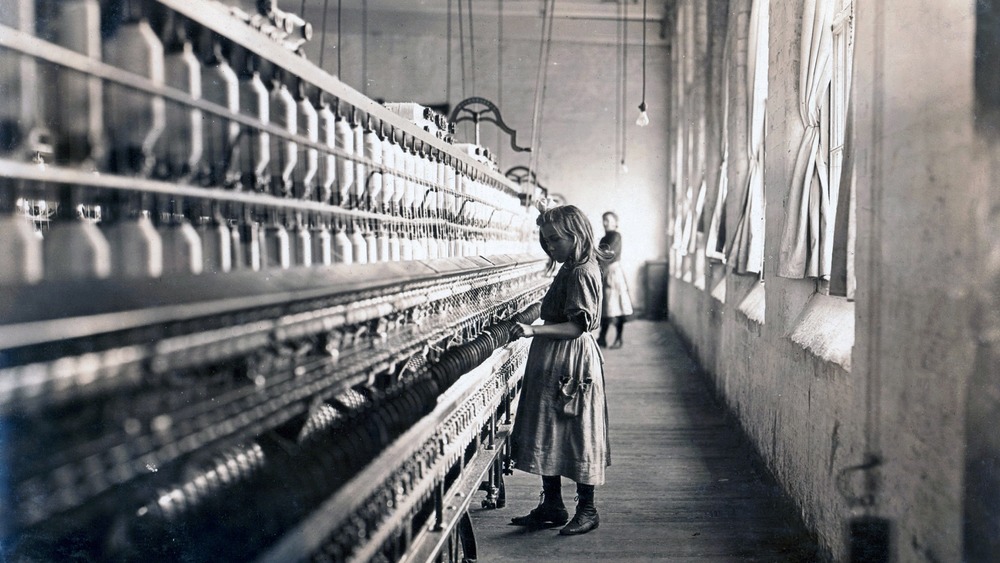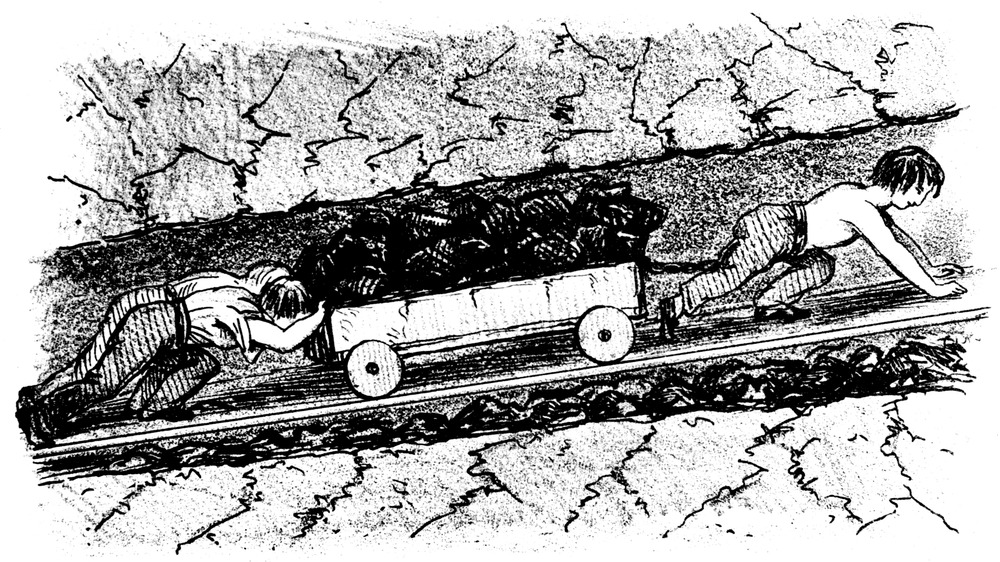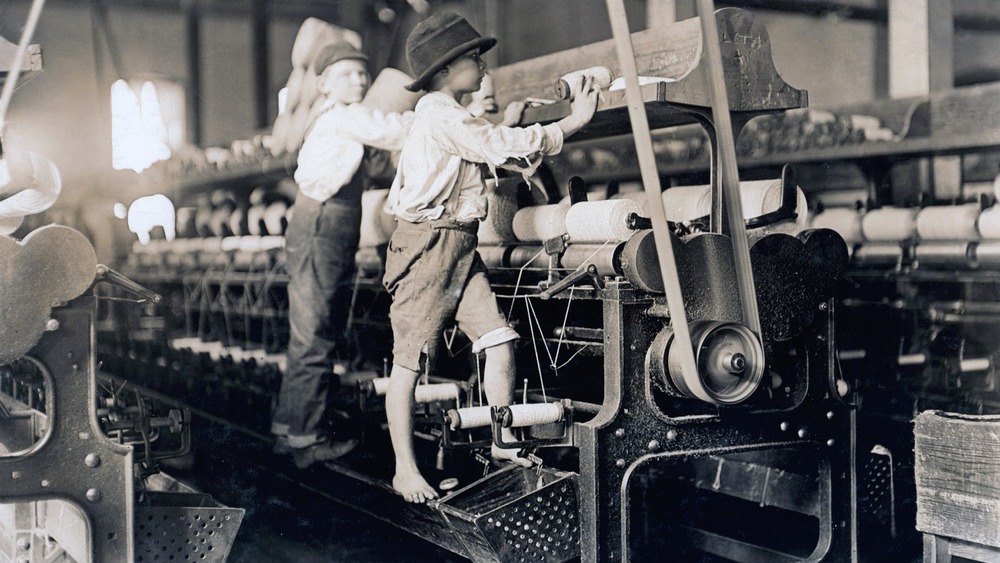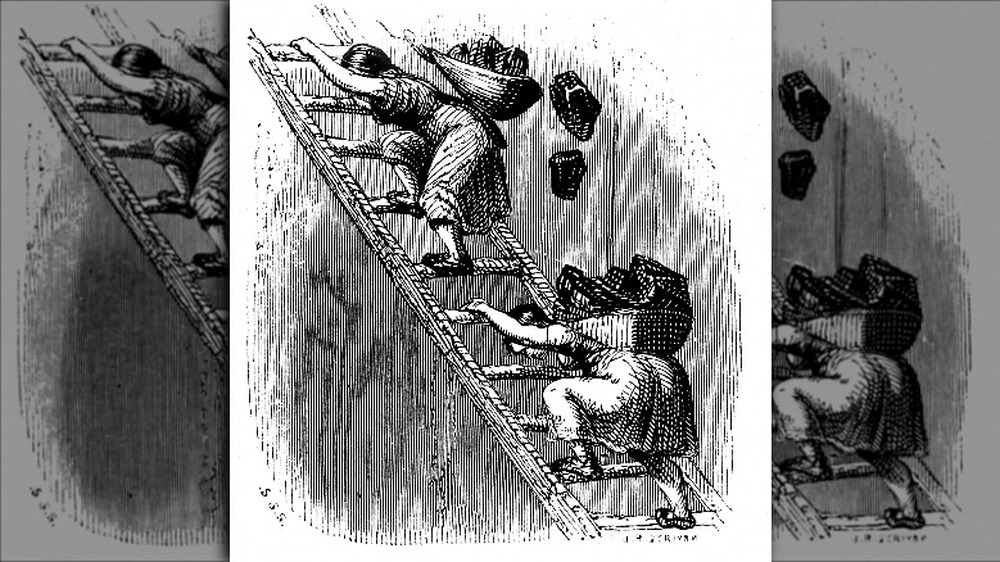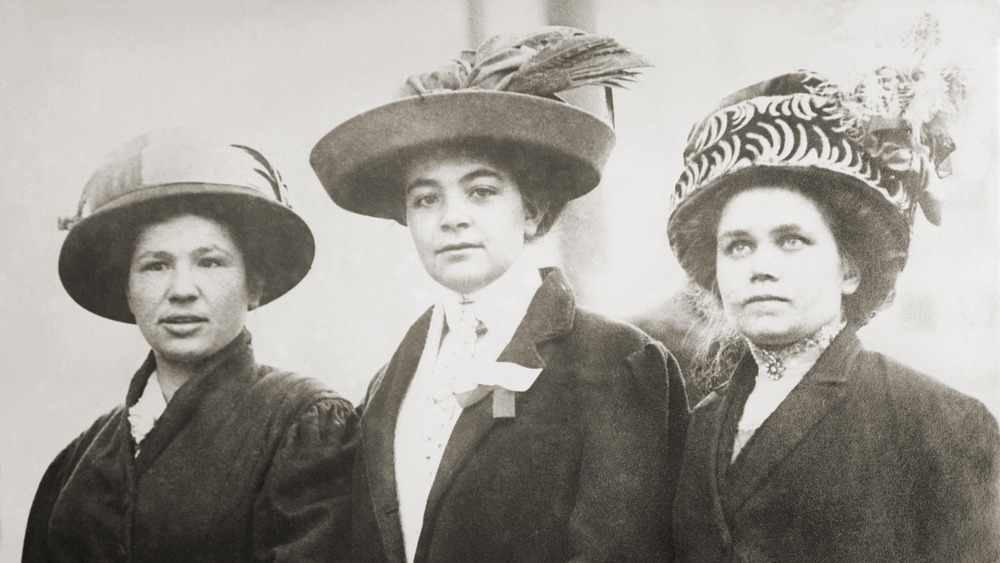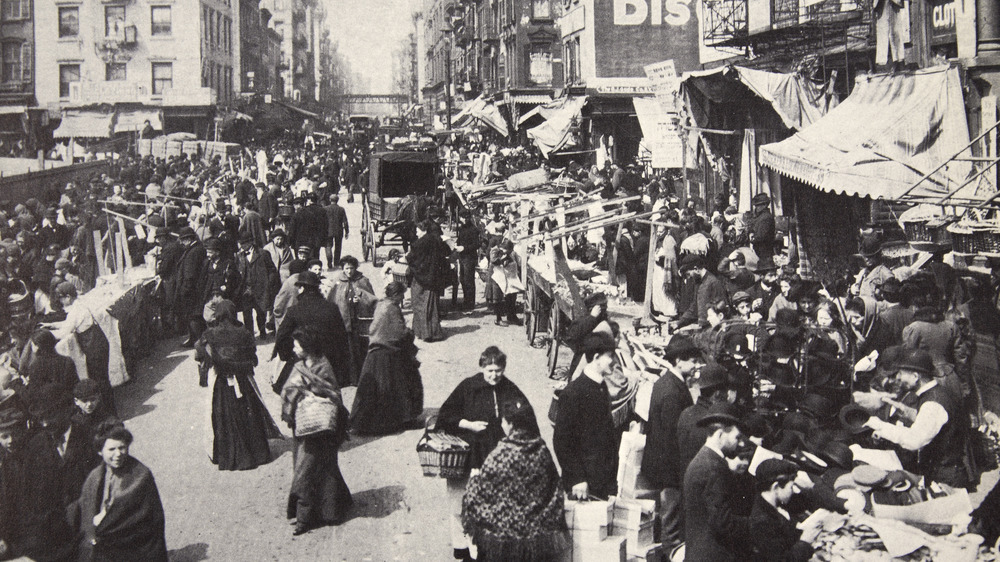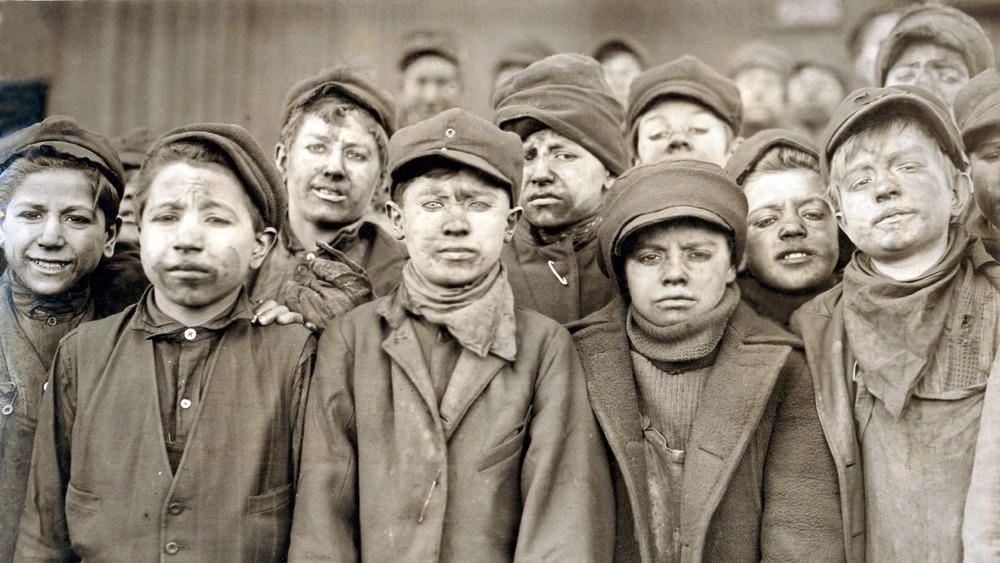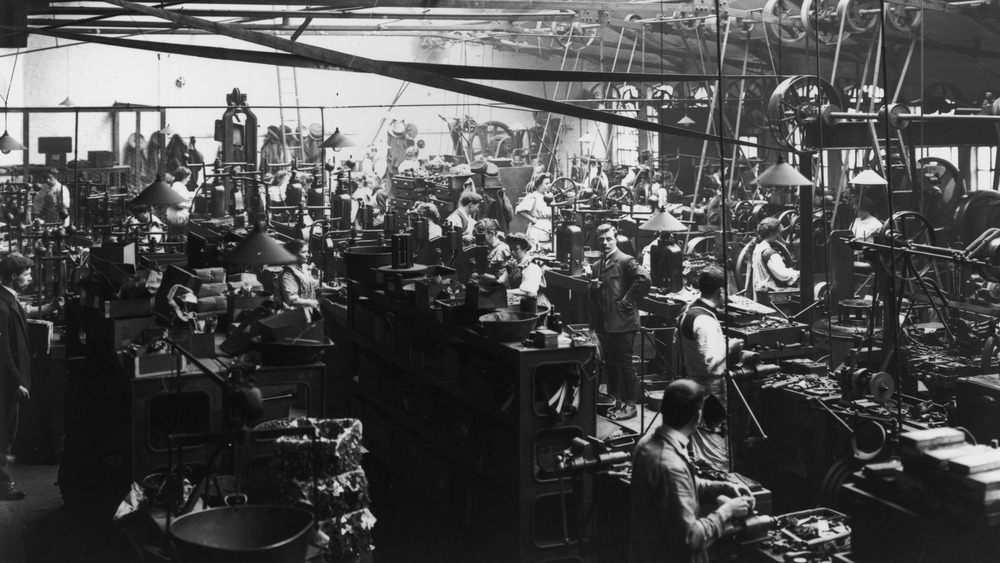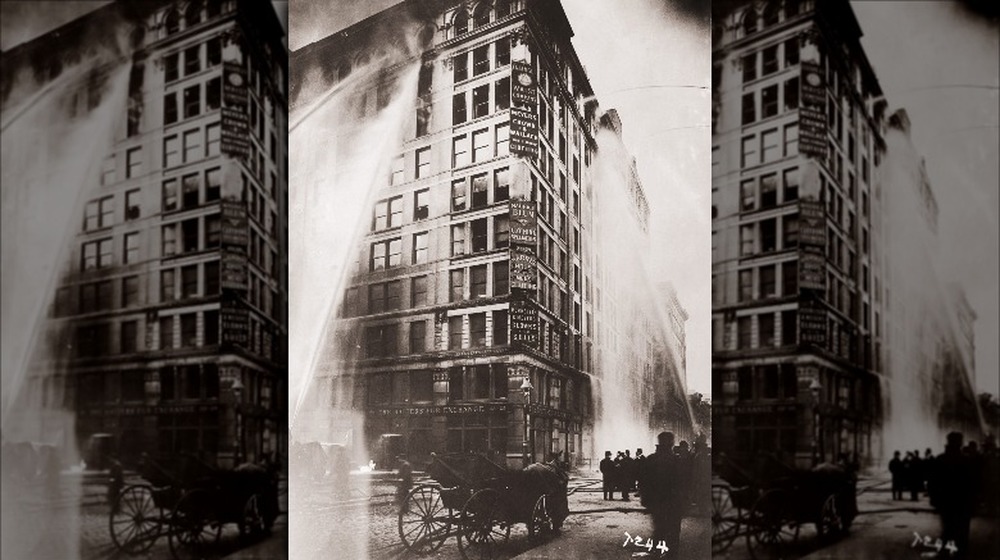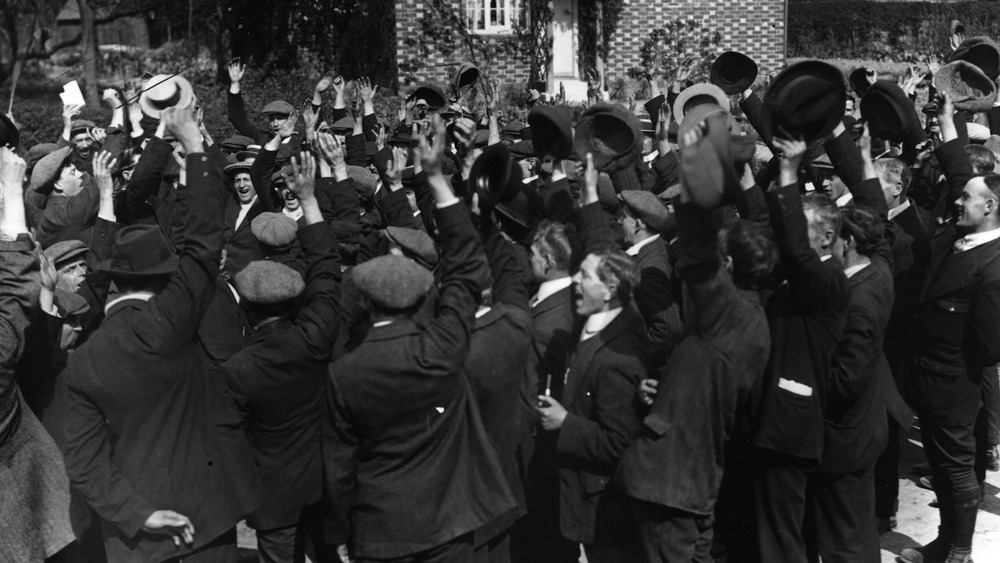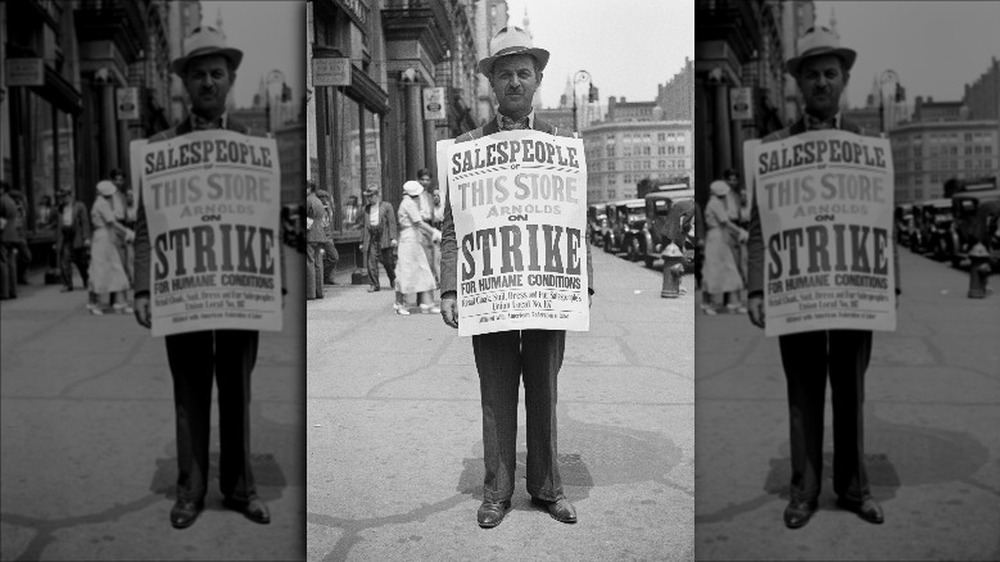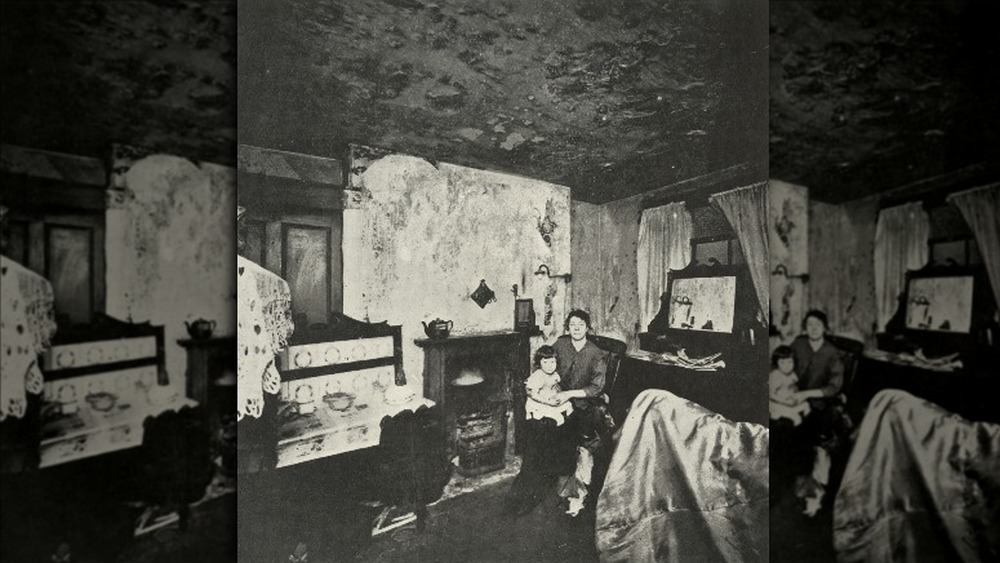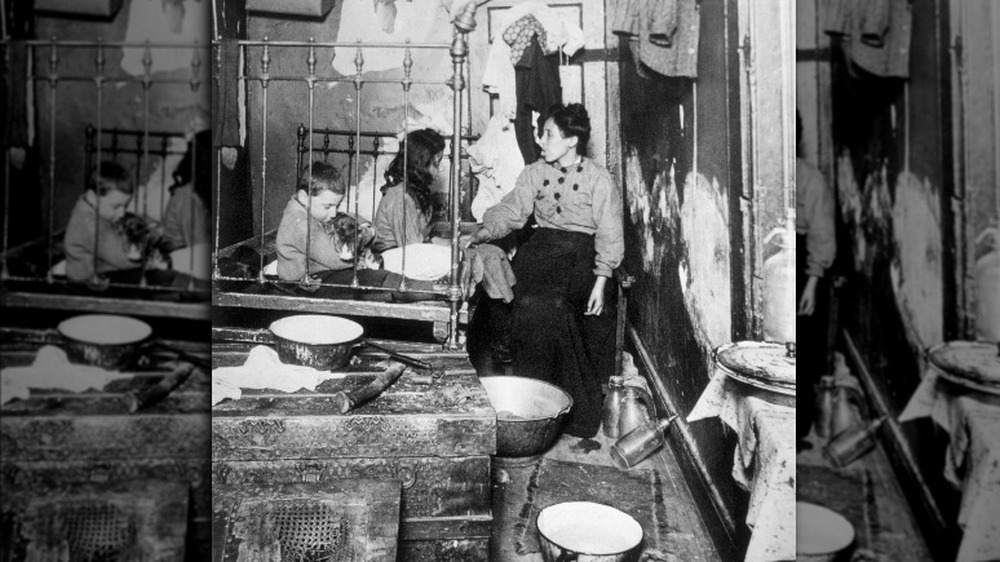What It Was Really Like As A Worker In The Industrial Revolution
Much of life today would never have existed without the Industrial Revolution. A time of dramatic innovation, industrialization made us go from a society that farmed and made everything by hand to one where goods could be mass-produced by machinery for a fraction of the cost. People started moving away from their family farms to work in factories near growing cities or in the coal mines that helped fire up all the new innovations that were being used.
But going to work back then was quite different from clocking into the modern office or factory. While there are laws to protect employees from certain conditions today, the industrial era was like a lawless world. Ruthless employers readily took advantage of their employees, overworking them in dangerous environments for the sake of productivity and profits. And eventually, laborers would be forced to fight for their rights. Here's what it was really like as a worker during the Industrial Revolution.
Most jobs were repetitive, tiring, and dangerous
While the onset of the Industrial Revolution and its accompanying inventions certainly made life easier in many ways, the actual day-to-day responsibilities of operating these new innovations were pretty tedious, if not dangerous at times. For example, textiles that used to be made by hand were now made through the monotonous operation of the spinning wheel and the loom, according to Thomas. With all this new machinery, the demand for coal also jumped, and working at the coal mines became a common profession. Coal mine workers ranged from adult men and women down to young boys.
TPM describes the kind of jobs that workers in the coal mines performed. "Breaker Boys" would spend all day underground sorting through coal and breaking them into equal pieces by hand, as well as picking out unwanted substances. Other jobs included pushing and pulling large crates of coals through the tiny tunnels in the mines or even just being responsible for pulling open a trap door for mine carts to roll through, according to Career Trend. Some of the jobs seemed simple enough, but the repetitive nature of them coupled with the long hours and awful work conditions would affect workers' health or even have them involved in deadly accidents.
Kids as young as 4 were joining the workforce during the Industrial Revolution
Child labor laws have been around long enough now that just the thought of having young kids clock-in and perform manual labor is sure to have most horrified. But during the Industrial Revolution, it would not have been out of place at all to see a bunch of children rushing to work grueling hours at low-skilled jobs. In fact, "18 percent of all American workers were under the age of 16" in 1900 (or around two million children later in 1910), as reported by History.
Without laws to prevent child labor, employers seemed to see no issue in hiring kids as young as 4 years old to work in factories and mines. Many even saw children as key employees, with several advantages over their adult counterparts. For one, they were cheap labor. According to History Crunch, a child working during the Industrial Revolution typically made between 10% to 20% of an adult's wage, despite performing the same work. Young orphan children, in particular, would find themselves victim to these awful employers, who would make them work for no pay at times, as described by Reference. Kids were also easier to order around than adults, making them the perfect employee for overbearing bosses. Finally, their small size made them more useful in fitting in all the nooks and crannies of factory machines. According to National Geographic, their tiny hands made them better at threading machinery in textile factories.
Women worked just as hard for a fraction of the pay
According to History Crunch, the Industrial Revolution played a big role in women entering the workforce. Before, they were mostly confined to domestic roles in the home, especially when farming on one's own land was the most common way of living. But as urbanization started taking place, more farming families were moving to cities in search of work. There, the working class found that jobs in factories and mines paid extremely poorly and so women — both young and old — began joining the workforce to help support their families. Women workers were in all types of factories, working on everything from cotton to textiles. A good number of them also worked in the coal mines, carrying loads of coals on their back or hauling mine carts attached to a band strapped around their waist.
Despite the fact that they were doing the same jobs men were also doing, women were blatantly discriminated against with their wages. In Great Britain, for example, women industrial workers were paid half of what their male counterparts were. This unequal treatment coupled with their increased role in society pushed women at the forefront of fighting for social change, such as a part of the labor, feminist, and suffrage movements.
The Lowell Mills tried to create a community for their young workers
While many factory owners and employers during the Industrial Revolution blatantly took advantage of and mistreated their workers, there were a few that tried to create positive work environments. One famous example was the Lowell mills, a system of textile mills in Lowell, Mass., that was formed in the early 1800s, according to ThoughtCo. Rather than employ children as was becoming popular, the Lowell mills focused on hiring young women to work in the textile mills. Moving out of their family homes, the Lowell Mill Girls were presented with safe boarding houses where they were encouraged to form a community and participate in cultural activities throughout the city. The girls would spend their free time reading, writing, and even ended up publishing their own magazine called "The Lowell Offering."
Still, as written by the Tsongas Industrial History Center, things weren't perfect. The Lowell Mill Girls were strictly monitored and controlled by the company and expected to maintain proper conduct at all times, with any funny business or "improper behavior" resulting in termination. Just a few decades later, competition in the textile industry became intense, and the Lowell mills had to cut costs through lowering wages, laying off workers, and dangerously speeding up machinery productivity. In response, the girls formed one of the earliest labor unions and organized strikes. Unfortunately, they would fail and, eventually, the factories began employing immigrants instead, who were desperate for any kind of job.
Employers took advantage of immigrants to fill their factories
Immigrants played a huge role during the Industrial Revolution, not just because they were a significant percentage of the workforce, but because their presence accelerated industrialization, as well. The late 1800s and early 1900s saw a huge influx of migrants come into the United States, with about 90% escaping situations like famine, crop failure, and job shortages in Europe, according to the Library of Congress and Washington State University. It was this wave of unskilled immigrants that "contributed to the growth and spread of factory manufacturing in the United States," according to Sukkoo Kim for the National Bureau of Economic Research, as employers took advantage of the new pool of immigrant laborers to establish more and more factories.
Unfortunately, with so many new workers, job competition was tough, with immigrant workers experiencing the worst of it. In addition to being socially discriminated against, they were subjected to the worst work conditions. Taking the unwanted jobs, they were often paid less than their non-immigrant counterparts. Because many of them spoke different languages, employers would also make sure to keep workers who spoke the same language apart in order to discourage any sense of community or rebellion.
Underpaid with no room for mistakes
A common aspect of working-class jobs during the Industrial Revolution was extremely low wages. According to History Crunch, the pay would be barely enough to cover living costs, which was a big reason why even little kids had to work in these jobs and help support the family. Even then, having five in a family working didn't necessarily mean five equal incomes. Employers had no qualms paying different wages based on age, gender, and more. In the United Kingdom, "adult men were paid around 10 shillings per week, while women were paid 5 shillings for the same work, and children were paid just 1 shilling." And if awful wasn't bad enough, employers had free rein to cut wages for whatever reasons they saw fit. Minor offenses, such as being late or taking a break without permission, would result in workers getting their pay docked.
Still, Britannica describes how the average factory worker was still making more than they would have on a farm, with the Industrial Revolution allowing people to no longer rely on land ownership for their wealth. Industrialization also made household items more affordable, as the cost of making clothes and tools went down with the rise of factories.
Pleasant work environments were rare during the Industrial Revolution
For industrial workers, going into work every day often meant spending 12 to 14 hours with no breaks in cramped factories, according to Reference. In the factories, machines were always on and running and heating up the window-less and poorly ventilated workplace to an average temperature of 82 degrees, as described by History Crunch.
Workers seemed to be low on the priority list in the design of these factories, with factory owners more concerned with stuffing as many machines in as possible in order to maximize productivity. As a result, many factories were hard to maneuver, with workers having to twist and turn to get through the machinery. With no concern for safety, dangerous gears and spinning belts were left exposed, just waiting for some poor soul to get caught in them. It was also extremely noisy all the time, and some workers would go deaf from being subjected to the sounds for hours a day.
Going to work meant risking injury, disease, or even death
Just going into work every day was a life-threatening risk for many during the Industrial Revolution. Workers were prone to be injured from the running machinery, getting chronic diseases from the toxic chemicals they breathed in every day, and even dying from the dangerous conditions of the factories. On top of all those horrors, workers' compensation was a limited concept. Before compulsory workers' comp laws, getting seriously injured or sick because of your job often resulted in being dismissed without any medical assistance or pay, as described by History Crunch.
Accounts of the tragic results of poor work conditions during the Industrial Revolution are countless. A terrifying scene of a young girl being mangled and crushed by a machine after her apron got caught was described in the Memoir of Robert Blincoe, by John Brown (via History Crunch). The matchstick women who dipped matches in white phosphorous all day soon began developing "phossy jaw," a condition where the jaw bone literally starts to rot before spreading to the brain and killing them, which was caused by daily inhalation of the toxic phosphorus fumes, as written by The Conversation. Similarly, the Tsongas Industrial History Center describes how workers in mills breathing in the cotton dust would develop the life-threatening brown lung disease. And then there was the Triangle Shirtwaist Fire where 146 workers died after being trapped when a fire erupted in a factory with nonexistent evacuation and fire prevention plans, according to History.
Workers started to reject individualism
As the Industrial Revolution progressed, corporations and upper-class businessmen began seeing massive profits. But that kind of wealth rarely made it down to the working class, as industrial workers were constantly pushed to be more productive just to receive none of the extra monetary gains, as described by an anonymous writer in the Voice of Industry, "the longest running labor newspaper published during the American Industrial Revolution." Personally affected by the greed of employers who only looked to improve productivity and profits, new attitudes and criticisms about American ideologies started to emerge among the working class. Writers in the Voice began fervently denouncing "the selfish individualism at the heart of the new economic system." Christian values, such as charity, were commonly used in arguments against "the pursuit of wealth" and gluttony.
Some workers took an extreme approach to rejecting individualism and started to isolate themselves from society. Called the Associationists, they would come together and move away from cities to create "self-contained utopian communities in the countryside" that were founded on ideals of cooperation, according to IndustrialRevolution.org. Those who didn't agree with withdrawing from society would instead form cooperatives and unions where workers banded together to help provide each other with health insurance or pensions.
Joining unions and organizing strikes during the Industrial Revolution
Angry at the awful conditions they were forced to work under, many workers would find themselves banding together to organize unions or strikes. According to The Conversation, miners, who often risked death in their professions, were one of the first groups to mobilize, but such behavior would quickly spread to other industries. Resentment over low pay or a terrible work environment would stew over time until singular instances such as a pay cut or major accident would push workers to protest. That's what happened with the Great Railroad Strike of 1877, as described by the Library of Congress. With their wages cut, railroad workers in up to four states were on strike for 45 days.
Unfortunately, striking and unionizing had consequences. The Great Railroad Strike ended up being violently put down by "a combination of vigilantes, National Guardsmen, and federal troops." Workers who joined unions or strikes had to keep an eye out for their employers, who would hire people to report employees who tried to come together and blacklist those known to unionize, according to PBS.
From factories to the slums
For the poor working class, getting off of work rarely meant coming home to a comfortable house. Instead, they went from hot, dusty factories to filthy and overcrowded slums. According to Reference, the new jobs that the Industrial Revolution created caused masses of people to rush into urban areas at a speed that was too much for construction to keep up with.
Under the guise of helping their employees, factory owners and businessmen had housing built for their workers, as written by History Crunch. In reality, they cared more about ensuring they had a labor force and making more money through rent payments. The homes were built in a rush, using cheap and low-quality materials. Without any concern for the residents, they were also designed without "unnecessary" features like windows or running water, and so hundreds of workers would go home from a long day of work just to dwell in polluted and cramped housing areas on the outskirts of factories and cities.
Workers suffered from awful hygiene conditions
Between the awful conditions of their workplace and their homes, poor Industrial Revolution workers also had to suffer terrible hygiene. After spending over 12 hours sweating in a factory, they would go home to no running water or sanitation system, according to History Crunch. History Learning Site describes how, in the U.K., many of the cheap homes built for workers had no bathroom or toilet.
People would go for days without washing, since the one option of collecting water from a local pump made it difficult to bathe regularly. Going to the restroom meant doing your business at public cesspits, which weren't exactly made widely available. A block of about 360 people would have an average of six cesspits that would be filled with waste, sometimes even leaking into nearby houses. Landlords had to pay for the cesspits to be emptied, and many only did so sparingly to save money. Even when they were emptied, though, the waste was usually thrown into nearby rivers, further polluting their water sources. With these filthy conditions of their neighborhoods, workers and their families were exposed to diseases like cholera, typhus, and typhoid.
